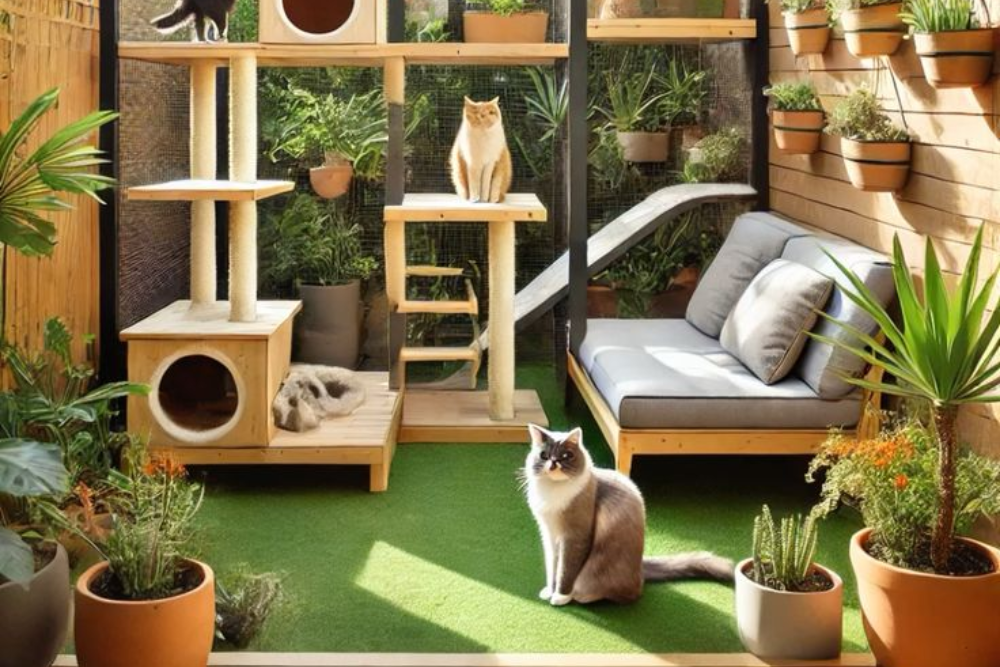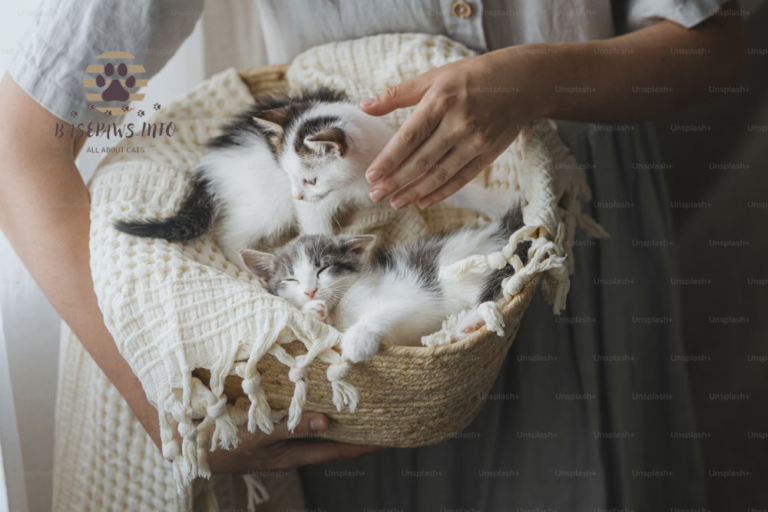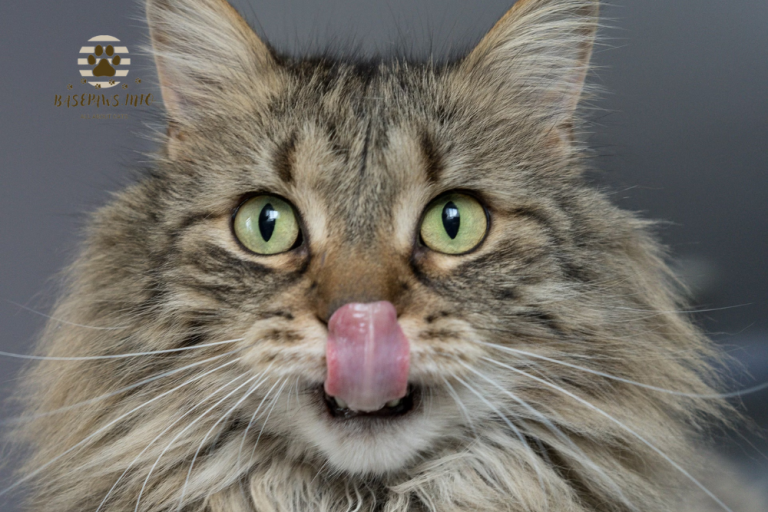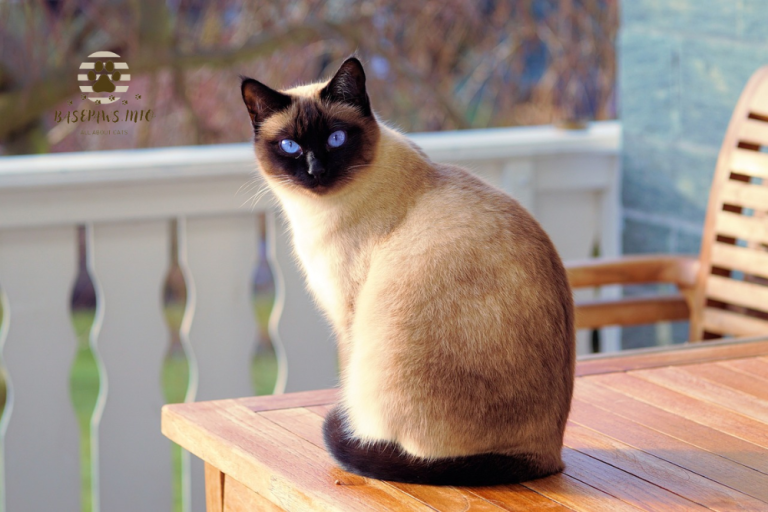Catio Ideas for Every Home: The Complete Guide to Catio Design and Construction
Introduction: Why Build a Catio?
Do you often worry about your cat’s safety while they’re outside? Many cat owners grapple with the dilemma of wanting to provide their felines with fresh air and outdoor stimulation without the risks associated with free roaming. Fortunately, a catio, or a cat patio, offers the perfect solution, allowing your furry friend to enjoy the outdoors securely and safely. A well-designed catio not only protects your pet but also keeps local wildlife safe, creating a harmonious environment for everyone.
Building a catio provides various benefits that cater to both cats and their owners. In this guide, we’ll explore innovative Catio Ideas, practical construction tips, and essential accessories to create the ideal catio that fits your space and your cat’s needs. Whether you want a simple setup or a more elaborate design, this guide will help you transform your outdoor area into a feline paradise.
From stylish and functional designs to expert advice on construction and common mistakes to avoid, this comprehensive resource aims to empower you to create a happy and healthy outdoor space for your cat. Let’s dive into the world of catios!
Inspiration and Design Catio Ideas
Stylish and Functional Catios
Creating a catio doesn’t mean sacrificing style for functionality. Here are some catio ideas that blend both:
Complex Catio with a Bridge
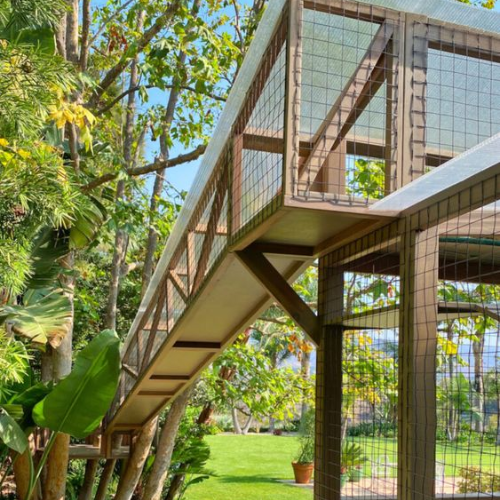
This design incorporates bridges and levels, providing climbing opportunities and interactive play for your cats.
Two-Storey Cat Enclosure
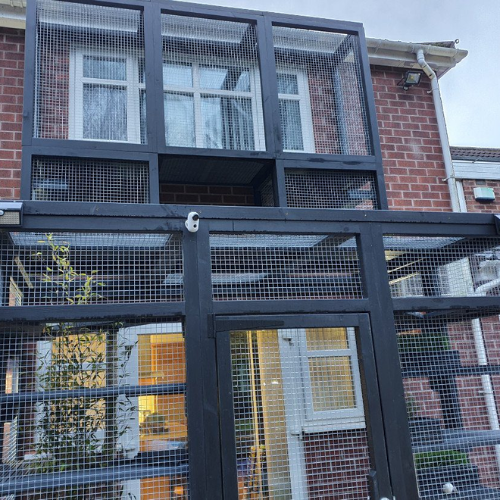
A multi-level catio allows multiple cats to enjoy space and engage in different activities simultaneously.
Playground for Cats
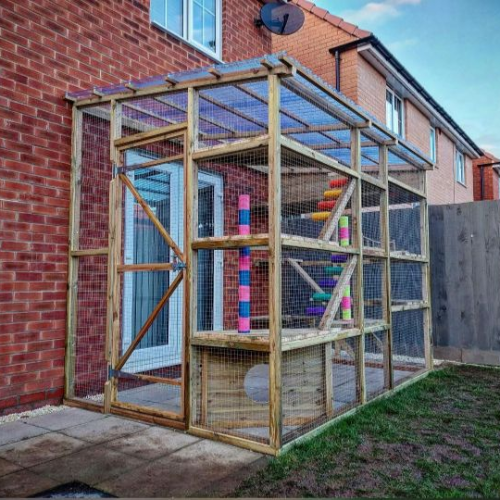
Include features like ramps, towers, and scratching posts to turn your catio into a playground.
The Spacious Catio:
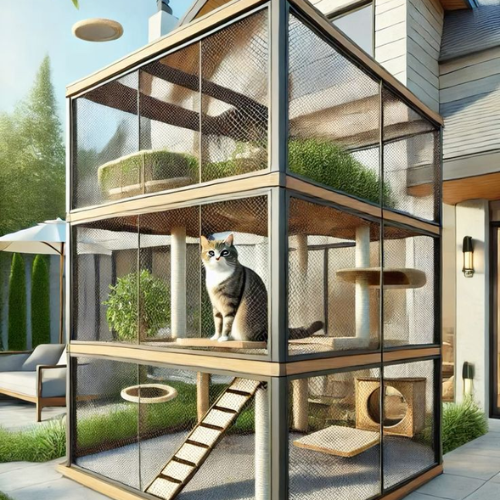
An expansive design that offers plenty of room for lounging, playing, and exploring.
The Stylish One:

A chic design that complements your home’s aesthetic while ensuring your cat’s comfort.
The Elegant Catio:
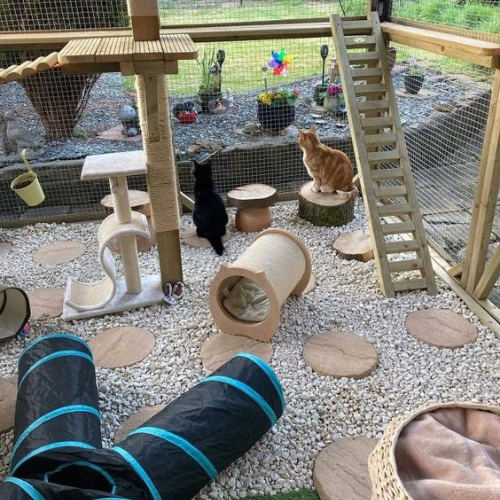
Use elegant materials and designs to create a visually pleasing catio that feels like an extension of your home.
Themed Catios
Add a unique touch to your catio with these themed designs:
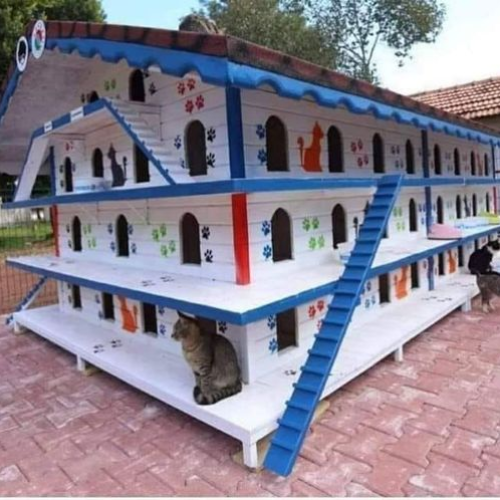
For the Love of Pink: A catio decorated in various shades of pink, filled with cat-friendly toys and structures.
Catio in a Rose Garden: Surrounded by beautiful roses, this catio provides a lovely view and a fragrant environment.

Freestanding Purple Catio: A vibrant purple color makes this catio stand out in your backyard.
For the Purple Lovers: Tailor your design around various shades of purple, using fabrics and accessories to match.

Princess Palace of the Kings: A luxurious catio design fit for a feline royalty, with cozy corners and plush furniture.
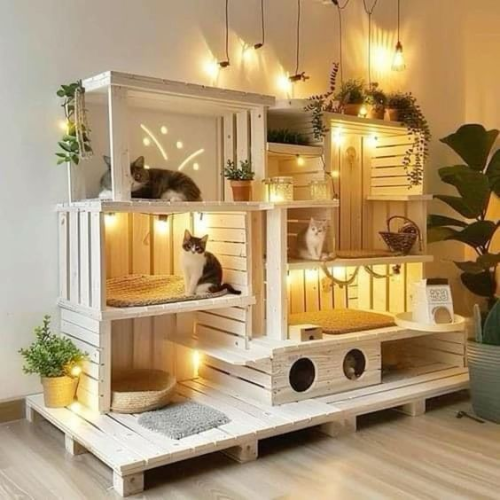
Cadbury Catio: Sweeten your cat’s space with chocolate-themed designs and decor.
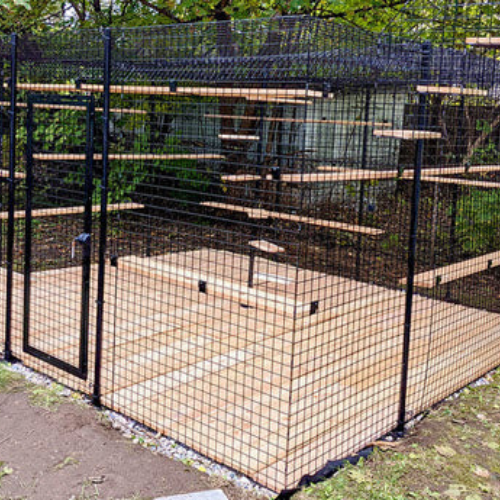
All Metal Catio: A modern, industrial-style catio made primarily from metal materials for durability.
Unique and Seasonal Catios
Bring creativity to your catio design with these unique catio ideas:
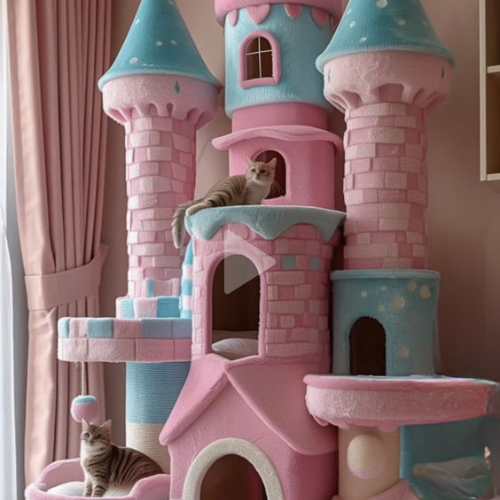
Obstacle Course for Cats: Create a fun challenge for your cat with various climbing structures and tunnels.
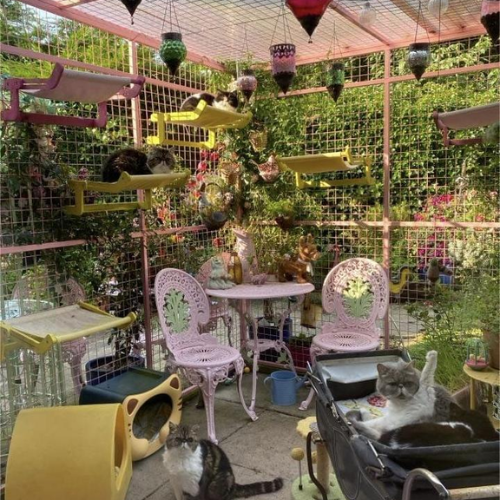
Extended Porch: Add an extension to your porch for a relaxing area where your cat can lounge.

The Perfect Match of Aesthetic and Functionality: Ensure your catio looks good while serving its primary purpose.
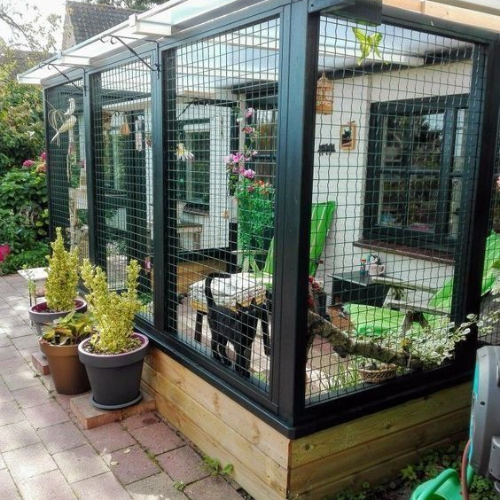
Samsara Lanai: An Asian-inspired design that provides peace and tranquility for your pets.

Miniature Adventure Park: A catio that mimics a theme park, filled with engaging toys and activities.

Perfect Summer Evening: Design a catio to maximize comfort on warm summer nights with cooling features.

Fairy Lights & Feline Nights: Incorporate fairy lights to create a magical nighttime environment for your cat.
Featured DIY Catios
Explore these personalized catio projects that make great examples:

Secret Garden Catio (Ginger’s Secret Garden Haven)
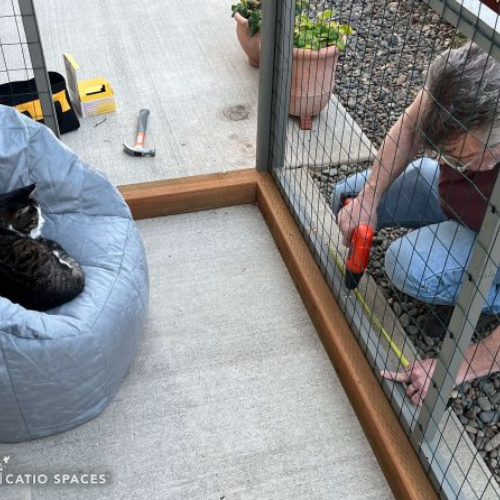
Sanctuary of Love Catio (Tracey’s Natural Sanctuary)
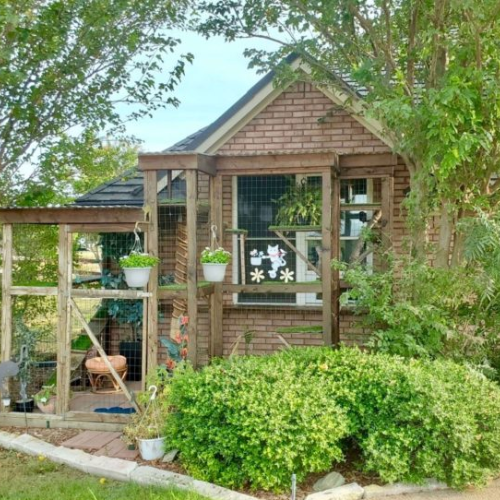
Sensory & Sunny Deck Catio (Danica & Jack’s Haven)
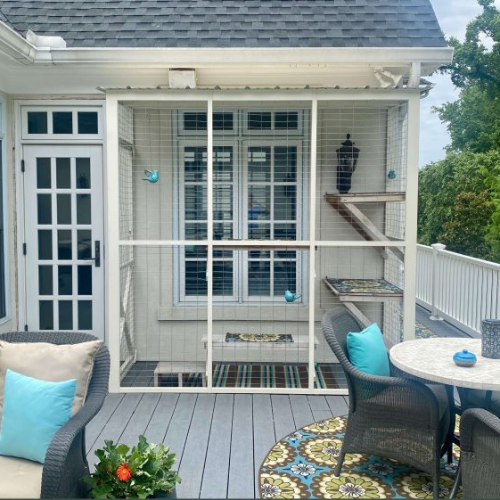
Coyote-Safe Catio Haven (Finn’s Protected Space)
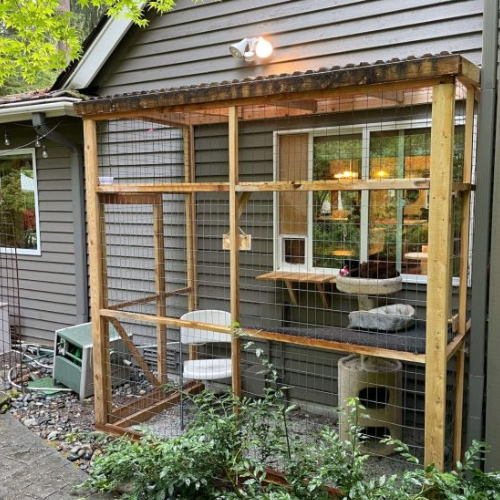
Crow’s Nest Window Catio (Jack’s Special “Jackio”)

Fabulous Four Catio (Simon, Emma, Sylvia & Everett’s Haven)

Penthouse Window Box Catio (Atosha & Tuddy’s Apartment View)
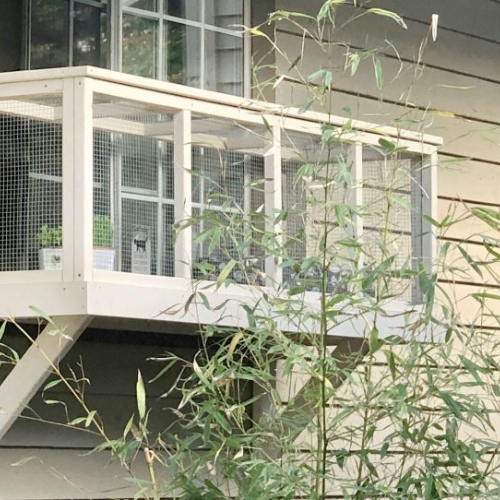
Trader Steve’s Catio (Tropical Tiki-Themed Oasis)
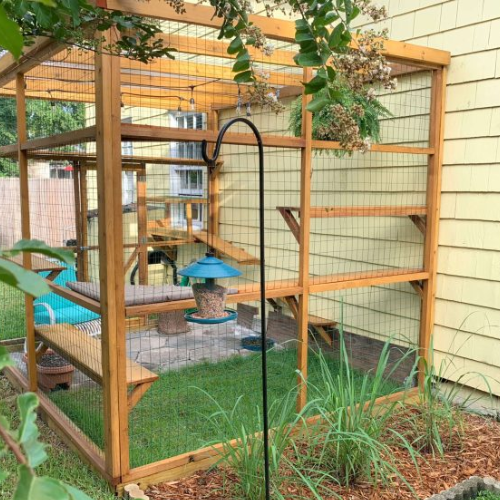
Stepping Stone Catio (Cricket, Apple & Goose’s Sanctuary)
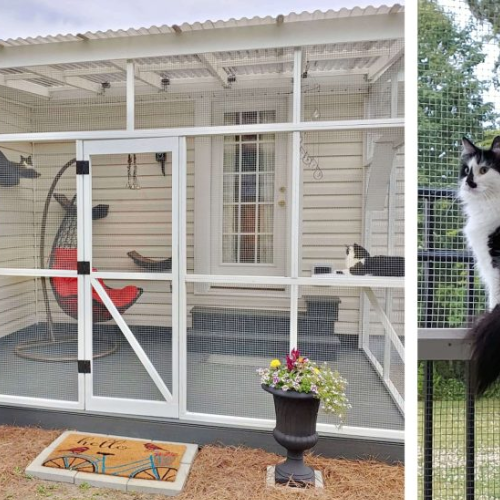
Delightful Deck Catio (Jinx & Jasper’s Sanctuary)

Starship Kitties Catio (Yoda & Obi Wan’s High-Climbing Sanctuary)
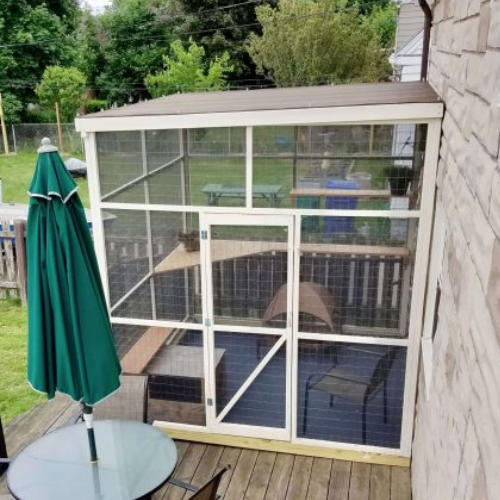
Forever Fur Kids Catios (BJ, Hawkeye, and Friends)
How to Build a Catio
Building a catio (cat patio) is a rewarding project that allows your feline friends to enjoy the outdoors safely. Whether you’re a DIY enthusiast or prefer a more structured approach, understanding the fundamental steps involved in constructing a catio is essential. This section will provide you with a comprehensive guide on how to plan, design, and build a catio that meets your cat’s needs and enhances your outdoor space.
Planning and Preparation
Before you start building your catio, thorough planning is essential to ensure that the project meets both your needs and those of your cat. The first step is choosing the right location for your catio. Look for a spot that allows easy access from your home while also providing a safe environment. Consider whether your cat will have a direct entry point into the catio, as this will make it easier for them to explore and enjoy their new space.
Next, assess the size of the area available for your catio. Measure the space to determine how large the enclosure can be, keeping in mind that cats enjoy vertical space for climbing and exploring. An ideal catio design will provide both horizontal and vertical space, incorporating shelves, ramps, and platforms.
Also, consider the balance of sun and shade within the location. Cats love sunbathing, but it’s crucial to provide shaded areas for them to retreat to during the hottest parts of the day. Additionally, choose a spot with a stimulating view of your yard or the surroundings, as this will keep your cat entertained while they observe birds, squirrels, and other outdoor activity.
Building Materials
Once you’ve determined the location and size of your catio, the next step is to select the right materials for construction. The most important aspect of building a catio is ensuring the safety of your cat. For this reason, sturdy wire mesh or lattice fencing is essential. Look for materials specifically designed for outdoor use that will withstand the elements. Ensure that any wire used is strong enough to prevent your cat from escaping and protect them from potential predators.
Flooring options should also be considered carefully. Many catio builders opt for gravel, pavers, or even artificial grass as these materials are easy to clean and provide good drainage. You want to avoid surfaces that can retain moisture, as they can create a damp environment that may lead to health issues for your cat.
In addition to the main structure, you will also need roofing materials. The roof should be designed to protect against rain and harsh sunlight. A sloped roof is beneficial as it allows rain to run off easily. Consider using materials like corrugated plastic or metal that provide shade while letting natural light filter through.
Accessories and Enrichment
An important aspect of creating a catio is ensuring it is a stimulating environment for your cat. After constructing the basic structure, focus on the accessories that will enrich their experience.
Start with cat toys and scratching posts, as these will keep your cat entertained and engaged. Cats love to climb, so consider adding various platforms and shelves at different heights to encourage vertical exploration. Ramps can also provide additional climbing opportunities, making the space more interactive.
Incorporating cat-safe plants into the design is another great way to create a more natural feel in the catio. However, it’s essential to ensure that all plants are non-toxic to cats. Some popular options include catnip, cat grass, and spider plants.
Providing a water source is also crucial. Cats can become dehydrated quickly, especially when exposed to heat. Consider placing a bowl or a small fountain inside the catio to encourage them to drink. Lastly, including a discreet litter box will help keep the area clean and allow your cat to feel comfortable using the space for extended periods.
Step-by-Step Building Instructions
To bring your vision to life, follow these detailed instructions for constructing your catio:
- Materials and Tool List: Begin by gathering all necessary materials and tools. This includes your selected wire mesh, wood or metal for the frame, roofing materials, fasteners, and any additional accessories. Make sure to have the right tools on hand, such as a drill, saw, measuring tape, and wire cutters.
- Panel Design and Assembly: Construct the panels of your catio first. Cut the wood or metal into the necessary lengths and assemble the frame using screws or brackets for stability. Ensure that the structure is sturdy enough to withstand weather conditions and potential climbing.
- Roof and Door Placement Options: As you assemble the panels, think about where the roof will sit. It should fit securely to prevent leaks and provide adequate shelter. Also, decide on the door placement, ensuring that it is easily accessible for both you and your cat.
- Adjustable Shelf Designs: Create shelves at varying heights to provide climbing opportunities for your cat. These shelves should be securely attached to the walls of the catio and spaced to allow for safe jumping and climbing.
- Bonus Tips for Acclimating Your Cat: After the catio is built, take your time introducing your cat to the new environment. Allow them to explore at their own pace, and consider placing treats or toys inside to encourage them to venture out. This gradual introduction will help them feel comfortable and secure in their new outdoor haven.
Building a catio can be a fulfilling project that enhances both your cat’s life and your outdoor space. By carefully planning the location, selecting suitable materials, and adding enriching accessories, you can create a safe and stimulating environment for your feline friends. With these detailed steps and considerations, you’ll be well on your way to constructing a catio that not only meets your expectations but also provides endless enjoyment for your cats. Happy building!
Catio Options: Kits, DIY, or Custom Builds?
When considering building a catio, it’s important to explore the various options available to suit your needs, budget, and skill level. Each approach—using a pre-made kit, taking on a DIY project, or commissioning a custom build—has its advantages and disadvantages. Understanding these options will help you make an informed decision that leads to a satisfying and functional catio for your furry friends.
Factors to Consider While
Before diving into specific catio options, it’s essential to consider several factors that will influence your decision:
- Temporary or Permanent Catio?
Determine whether you want a temporary solution or a permanent structure. Temporary catios can be disassembled and relocated, while permanent ones are more substantial and may require permits or additional groundwork. - Size and Location Preferences
Assess the available space in your yard or balcony and how much room you need for your catio. Your choice of option may depend on the size you envision and the layout of your property. - Cat Door Access and Safety
Consider how your cats will access the catio. Will you install a cat door leading from your home, or do you prefer to carry your cats in and out? Additionally, the safety features of each option should be a priority, as you want to ensure that your cats are secure from predators and can’t escape.
Pros and Cons of Catio Kits
Catio kits are pre-designed and packaged sets of materials that provide an easier pathway to building a catio without starting from scratch. Here are some advantages and disadvantages of this option:
Advantages:
- Ease of Assembly: Kits typically come with detailed instructions, making them user-friendly for beginners.
- Time-Saving: Since the materials are pre-cut and packaged, you can save time on preparation and planning.
- Pre-Designed for Safety: Many kits are designed with safety features that ensure your cat’s well-being.
Disadvantages:
- Limited Customization: Kits may not offer the flexibility to design your catio exactly as you envision, potentially limiting its size and shape.
- Cost Considerations: Depending on the brand and features, kits can vary significantly in price. While some are affordable, others may be expensive for what they offer.
DIY Catio Plans
Building a catio yourself can be a fulfilling project, allowing for complete creative control. Here’s a look at the benefits and drawbacks of the DIY approach:
Benefits:
- Customization: You have the freedom to design the catio to fit your specific needs and preferences, whether it’s a spacious enclosure or a cozy nook.
- Cost-Effective: DIY projects can often be more affordable since you can source materials on your own and use recycled or leftover materials.
- Skill Development: Constructing your own catio can be a great way to hone your DIY skills and learn about construction and design.
Drawbacks:
- Time-Consuming: Building a catio from scratch requires significant time investment in planning, gathering materials, and actual construction.
- Skill Requirements: If you lack experience in building or carpentry, the project can be challenging and may require research or guidance.
- Risk of Errors: Without proper knowledge, you might make mistakes that could compromise the safety or functionality of the catio.
Custom Catios
If you have specific ideas or requirements that kits or DIY projects can’t meet, opting for a custom-built catio might be the best choice. Here’s a deeper look at the pros and cons of this option:
Benefits:
- Tailored Designs: Custom catios can be designed to fit perfectly within your available space and can incorporate unique features that cater to your cat’s needs.
- Professional Expertise: Working with experienced contractors ensures that the catio is built safely and according to local regulations.
- High-Quality Materials: Custom builds often use high-quality materials suited to the environment, ensuring durability and longevity.
Drawbacks:
- Higher Costs: Custom builds typically involve more significant investment due to labor costs and premium materials, which can be a barrier for many cat owners.
- Longer Lead Time: Depending on the contractor’s schedule and workload, building a custom catio can take longer than a kit or DIY project.
Choosing between a catio kit, DIY project, or a custom build depends on your preferences, budget, and comfort level with construction. Each option has unique benefits and challenges that can significantly influence your decision. By carefully considering the factors outlined, you can select the best approach to create a safe, enjoyable outdoor space for your cat, ensuring they can experience the joys of the outdoors in a secure environment. Whether you opt for a kit, take on a DIY project, or hire a professional, the end goal remains the same: providing your feline friend with a delightful space to explore and play.
Catio Maintenance
Once you’ve built a catio, the work doesn’t stop there. Maintaining your catio is essential to ensure it remains a safe, clean, and enjoyable space for your feline friends. Regular maintenance will not only enhance your catio’s lifespan but also create a healthy environment for your cats. Here’s a detailed look at key maintenance tasks and considerations to keep your catio in top condition.
Regular Cleaning
Keeping your catio clean is vital for the health and happiness of your cats. Here are some cleaning tips to consider:
- Daily Cleaning: Make it a habit to check the catio daily for any messes or debris. Remove any droppings, uneaten food, or old toys. A quick daily cleanup can prevent odors and pests.
- Weekly Deep Clean: Once a week, conduct a more thorough cleaning. This includes:
- Scrubbing down surfaces with pet-safe cleaners.
- Replacing or washing any bedding or soft materials.
- Cleaning any food and water dishes to prevent the growth of bacteria.
- Seasonal Maintenance: Depending on the season, you may need to perform specific tasks:
- In the fall, ensure the catio is free of fallen leaves and debris.
- In the winter, check for snow accumulation and clear it to prevent damage or water build-up.
Inspecting for Damage
Regular inspections are crucial to identify any potential issues before they escalate. Here’s what to look for:
- Check the Structure: Inspect the frame and any supporting structures for signs of wear or damage. Look for cracks, rust, or rotting wood that may compromise the catio’s safety.
- Secure the Netting: Over time, the netting or wire mesh may loosen or tear. Regularly check to ensure that it remains secure and intact to keep your cats safe from predators and to prevent escape.
- Look for Pests: Keep an eye out for signs of pests, such as insects or rodents. If you notice any, take immediate action to eliminate them and ensure your catio remains a pest-free zone.
Updating Enrichment Features
Cats thrive in environments that stimulate their natural instincts. To keep your catio engaging, consider the following:
- Rotate Toys: Just like indoor cats, outdoor cats can get bored with the same toys. Rotate your cat’s toys regularly to keep them interested and mentally stimulated.
- Add New Features: Every few months, consider adding new climbing structures, scratching posts, or perches to your catio. These changes can spark your cat’s curiosity and encourage play.
- Incorporate Plants: If your catio allows for it, consider adding cat-safe plants to provide a more natural environment. Ensure these plants are non-toxic to cats, and check regularly for any dead leaves or weeds.
Seasonal Considerations
As seasons change, so do the needs of your catio:
- Winterization: In colder months, ensure that the catio is adequately insulated and protected from harsh weather. Provide sheltered areas where cats can escape the cold.
- Summer Cooling: During hotter months, ensure your catio has shaded areas to protect your cats from overheating. Consider adding a fan or a misting system for additional cooling.
Safety Measures
Maintaining safety is paramount in your catio. Here are a few tips to ensure your catio remains secure:
- Secure Entrances: Regularly check that all doors and access points close properly. Replace any broken locks or latches immediately.
- Monitor Outdoor Access: If your catio is connected to your home via a cat door, ensure it is functioning correctly and that the area leading to the catio is secure.
- Emergency Preparedness: Have a plan in place for emergencies, such as natural disasters. Ensure your catio is easily accessible in case you need to quickly evacuate your cats.
Common Mistakes to Avoid When Building a Catio
Building a catio can be an exciting project, but it’s important to be aware of common pitfalls that could lead to problems down the line. By understanding these mistakes, you can ensure that your catio is a safe, functional, and enjoyable space for your furry friends. Here are some of the most common mistakes to avoid when constructing your catio:
1. Building on an Unlevel Foundation
One of the most crucial aspects of constructing a catio is ensuring a level foundation. An unlevel surface can lead to structural instability, which may pose safety risks for your cats. Here’s why it matters:
- Safety Risks: An uneven base can cause parts of the catio to shift or collapse, putting your cats in danger.
- Water Drainage Issues: If the foundation isn’t level, water can pool in certain areas, creating muddy conditions that may attract pests or cause damage over time.
Solution: Before construction, thoroughly assess and prepare the ground. Use tools like a level or a laser level to ensure the base is flat and even. You may need to dig down or add soil to achieve this.
2. Failing to Make the Catio Escape-Proof
Cats are natural explorers and can be surprisingly agile. If your catio isn’t adequately escape-proof, your feline friend may find a way out. To prevent this:
- Inspect for Weak Points: Regularly check seams, openings, and any potential weak spots where your cat could escape.
- Choose the Right Materials: Use sturdy wire mesh or fencing that’s difficult for cats to claw through or climb. A well-secured roof can also prevent escapes from above.
Solution: Reinforce all areas of the catio, focusing on the roof and any openings. Consider using a double-layered approach or an additional barrier if you have a particularly adventurous cat.
3. Using Fake Grass Instead of Real Grass
While fake grass may seem like a low-maintenance option for your catio, it can actually be detrimental to your cats’ experience and health. Here’s why:
- Heat Retention: Synthetic materials can retain heat and become uncomfortable for your cats during warmer months.
- Lack of Natural Behavior: Cats enjoy digging, scratching, and exploring natural textures. Fake grass doesn’t provide the same satisfaction as real grass or soil.
Solution: Incorporate real grass or soil in part of your catio. Consider using cat-safe plants, sandboxes, or digging areas that allow your cats to engage in their natural behaviors.
4. Choosing the Wrong Type of Wire
Selecting the appropriate wire for your catio is critical for safety. The wrong type of wire can lead to escapes or injuries:
- Wire Gauge: Thinner wire may not hold up against clawing or biting, leading to breakage.
- Spacing: If the wire mesh has too much space between the bars, smaller cats may squeeze through.
Solution: Use a wire gauge that is strong enough to withstand wear and tear, ideally at least 14-gauge. Ensure the mesh spacing is small enough to prevent escapes; typically, 1 inch or less is recommended.
5. Blocking Sunlight from Entering the Catio
Cats love basking in the sun, and blocking sunlight from entering the catio can make it less enjoyable for them. Here’s what to keep in mind:
- Insufficient Sunlight: A dark and shaded catio may lead to boredom and inactivity.
- Poor Ventilation: Lack of sunlight can also contribute to a stuffy environment.
Solution: Design your catio with adequate sunlight exposure in mind. Consider using clear panels or mesh in certain areas to allow natural light to filter in while also providing shaded spots for your cats to retreat.
6. Leaving Food in the Catio
While it’s essential for your cats to have access to food and water, leaving food in the catio for extended periods can lead to several problems:
- Attracting Pests: Unattended food can attract unwanted pests like ants, flies, and rodents.
- Bacterial Growth: Old or spoiled food can pose health risks to your cats.
Solution: Set a feeding schedule and remove uneaten food promptly. Make sure to keep the water fresh and clean, and replace it daily.
7. Carrying Your Cat to and from the Catio
While you may think you’re helping your cat by carrying them to and from the catio, this practice can cause anxiety and stress. Cats are naturally curious and may want to explore on their own terms.
- Stressful Transition: Forcing a cat to be carried can create anxiety around the catio experience.
- Loss of Independence: Cats should feel free to enter and exit the catio as they please.
Solution: Install a cat door that allows your cat to come and go at their leisure. This gives them the freedom to explore and enjoy their catio without feeling confined.
8. Leaving Yourself Out of the Catio Experience
Cats thrive on interaction with their human companions. If you create a catio but rarely spend time there, your cat may not fully enjoy the space.
- Limited Interaction: Your cat may feel isolated or bored if they don’t have you to share their outdoor experiences with.
- Missed Bonding Opportunities: Spending time in the catio together can strengthen your bond and enhance your cat’s well-being.
Solution: Make it a habit to spend time in the catio with your cat. Bring a book, a chair, or even toys to engage in play. This will enrich their environment and promote a happier, healthier relationship.
Building a catio is a rewarding experience that enhances your cat’s life while keeping them safe. Whether you choose to DIY or opt for a kit or custom build, your effort will pay off in a happy, healthy cat enjoying the great outdoors from the comfort of their secure enclosure. Embrace the joys of cat ownership by creating an outdoor haven where your feline friends can thrive!
Creating a catio can transform your home and offer your cat a safe space to enjoy the outdoors. By considering design ideas, planning meticulously, and avoiding common pitfalls, you can ensure a successful build that meets your cat’s needs.
Summary Table of Key Considerations for Building a Catio
| Consideration | Details |
| Location | Choose a safe, visible area. |
| Design | Tailor to your cat’s needs and preferences. |
| Materials | Use durable, cat-safe materials. |
| Budget | Plan for costs of materials and labor. |
| Maintenance | Schedule regular cleanings and inspections. |
By following this guide, you can create a catio that not only looks beautiful but also provides endless entertainment and safety for your feline friends. Let your creativity flow, and enjoy the process of building a paradise for your pets!

